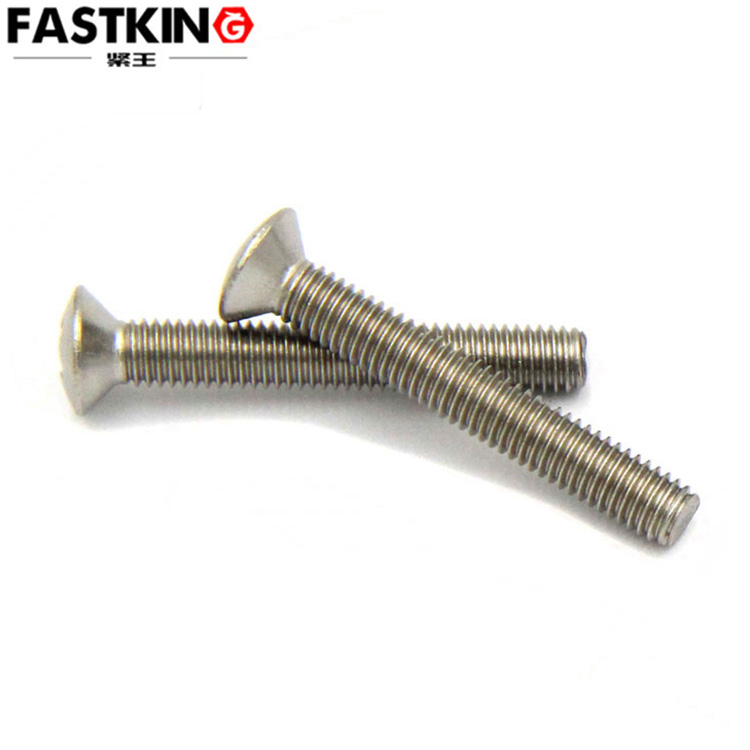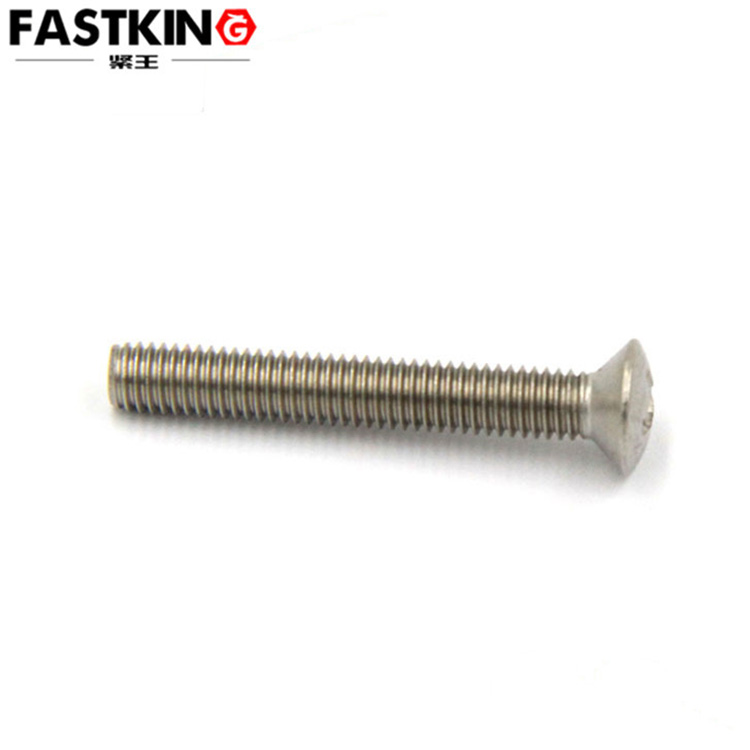DIN966 Cross-Head Countersunk Screws: Usage and Application Scenarios
DIN966 cross-head countersunk screws are standard fasteners widely used in industrial and mechanical manufacturing. Their design features make them particularly suitable for applications where partial countersinking is required, offering both reliable fastening and aesthetic appeal. This article provides a detailed introduction to the usage and application scenarios of DIN966 screws.

Usage of DIN966 Cross-Head Countersunk Screws
1. Tool Selection
The head of DIN966 screws features a cross-slot, requiring a cross-head screwdriver or an electric screwdriver for installation. Select a screwdriver size that matches the cross-slot on the screw head to prevent damage during installation.
2. Preparation Before Installation
Before installing DIN966 screws, ensure the precision of the threaded hole. The screw head is designed for partial countersinking, so the installation hole should be partially countersunk to ensure the screw head is flush with the installation surface. If a higher degree of flatness is required, a washer can be used for adjustment.
3. Installation Steps
Align the screw with the hole, ensuring it is perpendicular to the installation surface.
Insert the screwdriver gently into the cross-slot of the screw head and rotate evenly until the screw is fully tightened.
If using an electric screwdriver, pay attention to controlling the tightening torque to avoid damaging the screw or the installed component due to excessive tightening.
4. Notes for Attention
Keep the screwdriver perpendicular to the screw head during installation to prevent slipping or damage to the screw head.
For applications requiring repeated disassembly, consider using high-strength and corrosion-resistant materials, such as stainless steel.
Regularly inspect installed screws to ensure they have not loosened due to vibration or other external forces.

Application Scenarios of DIN966 Cross-Head Countersunk Screws
1. Mechanical Manufacturing
DIN966 screws are widely used in mechanical manufacturing to secure various components, such as motor housings and sensors. Their high strength and wear resistance meet the demands of industrial environments, ensuring stable connections of mechanical parts.
2. Electronic Devices
In electronic devices, DIN966 screws are often used to fix PCB boards and electronic component housings. The countersunk design allows for a flat surface, enhancing aesthetics. For example, in precision instruments and medical equipment, DIN966 screws ensure a secure connection of internal components.
3. Automotive Manufacturing
In the automotive industry, DIN966 screws are commonly used to fasten internal vehicle components, especially in areas requiring vibration resistance and high-temperature tolerance. The countersunk design provides sufficient clamping force while maintaining a neat appearance.
4. Construction and Furniture Industry
In construction and furniture manufacturing, DIN966 screws are used to fix components such as door frames, window frames, and drawer slides. The countersunk design allows for a flat surface, enhancing aesthetics. Additionally, stainless steel DIN966 screws offer good corrosion resistance, making them suitable for damp environments.
5. Aerospace
The aerospace industry has high requirements for fasteners, and the high strength and reliability of DIN966 screws make them an ideal choice. The countersunk design reduces air resistance, improving the performance and safety of equipment.
6. Railway Transportation
In railway transportation equipment, DIN966 screws are used to secure internal components of carriages, seats, handrails, and other parts. Their high strength and vibration resistance ensure the stability of equipment during operation.

Technical Specifications of DIN966 Cross-Head Countersunk Screws
Materials: DIN966 screws are available in materials such as carbon steel, stainless steel (e.g., A2-70, A4-70), and brass.
Strength Grades: Common strength grades include 4.8, 5.8, 8.8, etc.
Surface Treatments: Screws can be untreated, galvanized, blackened, or coated with other finishes.
Size Range: DIN966 screws are available in diameters ranging from M1.6 to M20, with lengths customized according to specific requirements.
Conclusion
With their unique design, high strength, and corrosion resistance, DIN966 cross-head countersunk screws have become ideal fasteners for multiple fields, including mechanical manufacturing, electronic devices, automotive, construction, aerospace, and railway transportation. By mastering the correct installation methods and selecting appropriate materials, their performance advantages can be fully utilized to meet the demands of various complex working conditions. As industrial technology continues to evolve, the application scope of DIN966 screws will further expand, providing more reliable fastening solutions for modern manufacturing.
